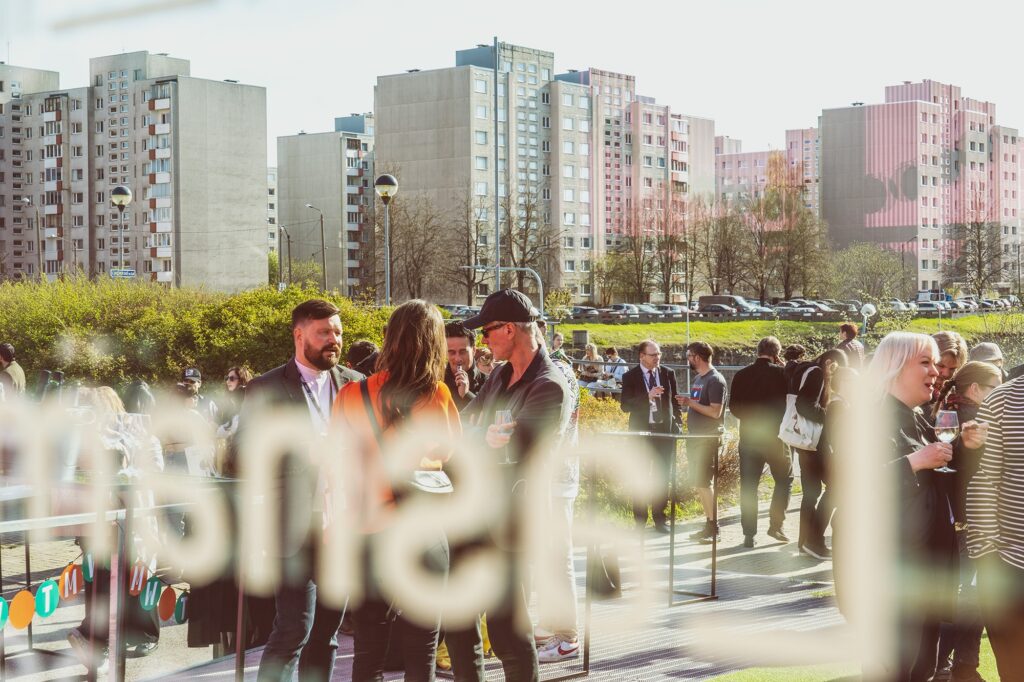Despite a changing demographic landscape and a more open-minded younger generation, Estonian and Russian-speaking teenagers in Estonia continue to grow up separately due to language barriers, according to a survey conducted by Arina Sljusar; while both sides express a desire to connect, the quality of language teaching in Russian schools and a lack of knowledge and willingness to learn Estonian are identified as significant obstacles to fostering stronger ties between the two communities.
Estonian-Russian relations is a topic the Estonian society is usually reluctant to discuss. The society has its reasons – the roots of which go far back into the past. Estonia was occupied by the Soviet Union for 50 years and the population was deeply affected: Estonians were oppressed, deported to labour camps in Siberia and arrested.
The country’s ethos also changed completely during the Soviet era. In the 1920s, when Estonia was an independent state, 89 per cent of the total population was ethnic Estonian. The Soviet occupation saw large-scale immigration and today ethnic Russians are the largest minority group in Estonia, making up 23.7 per cent of the total population.
Since Estonia regained its independence in 1991, new generations of children and young people have grown up in the country without first-hand experience of the Soviet Union. Young people are like a new beginning; if the older generations of Estonians and Estonian-Russians have reasons to mistrust each other, young people born in a free country can build good relations with other nationalities. Or maybe not?
The language barrier
To get personal opinions from both Estonian and Russian-speaking teenagers, I conducted a survey to which 53 young people responded.
To the question “Do Estonian and Russian-speaking teenagers grow up separately in Estonia”, the majority answered “yes” – they grow up separately.
Some people said it depended on the region. “I think teenagers in Tallinn are well integrated, but in Narva, for example, teenagers who speak Russian grow up in a completely different world from those who speak Estonian,” one said, while the other noted, “It depends on the place. Central Estonia is more mixed; Russians are in eastern Estonia and the Lasnamäe borough of Tallinn; Estonians in western Estonia”.

The language barrier was cited as the main reason for growing up in “different worlds”. Russian-speaking teenagers said they felt their Estonian was not complete and that they were not taught enough of it at school. “The only problem is the language; I am not good at Estonian,” was a typical response.
Russian schools do not teach Estonian slang
Russian schools also do not teach Estonian slang, which is a large part of today’s teenage vocabulary – without knowing it, it is difficult to understand one’s young conversational partner. “We are not taught Estonian slang at school. So sometimes it is not clear what my Estonian-speaking partner is talking about,” said one of the respondents.
From the Estonian side, the Russians’ lack of knowledge and unwillingness to learn Estonian was mentioned not only as a communication problem, but also as a demand. “Russians living in Estonia must be able to speak Estonian”. “In my opinion, all Estonian citizens should be able to speak Estonian and no one should be forced to speak or learn Russian because someone else cannot speak Estonian,” said another.

Estonian teenagers who have Russian-speaking friends also said Russian schools did not teach the Estonian language well enough. “I have many friends who are Estonian Russians. I like them; I know the Estonian language is taught quite badly in Russian schools, so many young Russians can’t find a common language with our [Estonian] young people, except to communicate in English”.
Young people are more open
Compared with Estonian and Russian-speaking adults, who often have prejudices against each other and often live in separate communities, young people are more open in this respect. Forty-one out of 53 respondents answered that they had friends from the opposite language group. The majority also replied they did not care who they communicated with – the main thing was to find a language that they both spoke, which could be English.
The answers to the question, “Do Estonian-Russian relations affect your attitude towards representatives of the opposite nationality? Almost half answered “yes” and half “no”; someone said it depended on their opinion about the war in Ukraine.
But one response brought out the pain on both sides. “Having many relatives in Russia and Estonia, I can safely say that people are different. I can understand why some Estonians hate Russians and call us occupiers, because occupation and communist terror also affected my family. I know very well how difficult it was for the victims to lose their homes, their families and their freedom. And I can also understand why some Russians hate Estonians, because we would be denied the right to study in our language (Estonia passed a law in 2022 that provides for the transition to Estonian-language education throughout the country, starting in kindergarten and in grades one and four in 2024 – editor). I am very sad that, in this situation, it is impossible to maintain neutrality.”
More mixed families
Another very important issue in Estonian society is mixed families. There are more and more examples of Estonian and Russian speakers meeting, falling in love and starting a family. Their children have two mother tongues, are more integrated and have a greater desire to communicate with both Russian speakers and Estonians, because they see an excellent example from home that both nationalities deserve a chance and do not see any differences in who they can be friends with.

It’s a good argument that mixed families should be one of the main topics when discussing integration. More multi-ethnic families in the media should help both language groups to see each other in a positive light, as they are seen as an essential sign of integration and a factor that promotes it.
Every year, Statistics Estonia publishes the population census. According to the results of the 2021 register-based population and housing census, there are 341,995 families in Estonia. Twelve per cent of them are multi-ethnic households, of which five per cent are Estonian-Russian households.
Both sides have the desire to communicate
The new Estonian generation is increasingly free of the division between Estonians and Russians, perceiving a person as a person and not as a representative of any nationality. The survey also showed that the main problem is language, otherwise both sides have the desire to communicate and be friends with each other. The quality of Estonian language teaching in Russian schools is poor, and both sides noted this.
The good thing is that, in reality, relations between Estonian and Russian-speaking young people are not as bad as the Estonian society and the media make them out to be. We can only hope that in the future, all aversions will disappear and every representative of a nationality living in Estonia will feel safe and equal.


Great article Arina! Well done.
– Matt A.